Ever heard of year-long literacy centers? As a classroom teacher, they absolutely transformed my literacy center time!
Literacy centers were an absolute requirement during our guided reading block when I taught K/1. So, I jumped right in, prepping cute literacy centers that were sure to please any administrator. {15-20 different cute ones a week to be exact.}
But it became clear early on that I was going to burn out before Christmas if I kept at this pace. I only became more and more frustrated with literacy centers, trying all kinds of things for a couple of years until…
I learned about year-long literacy centers.
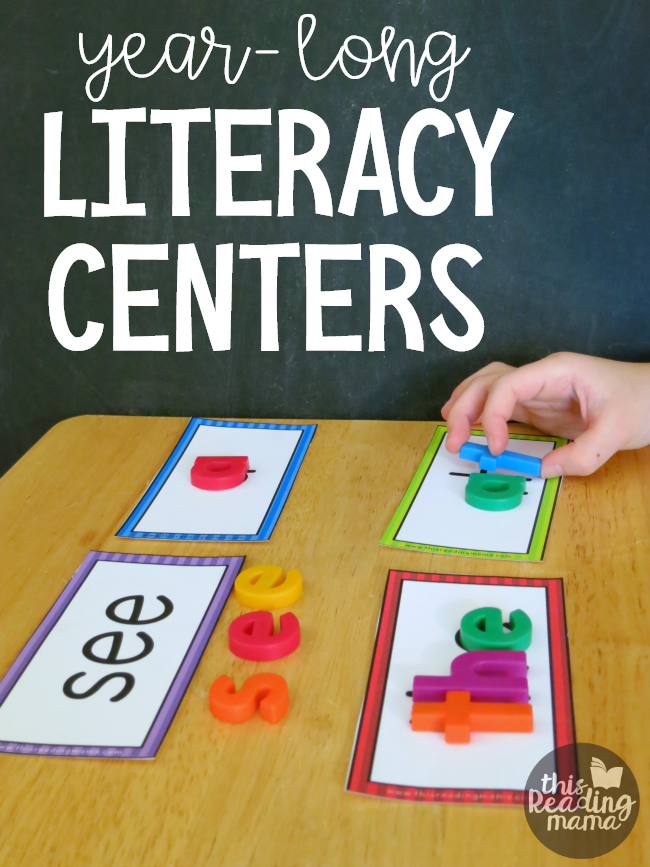
*This post contains affiliate links.
Year-Long Literacy Centers {with Free Choice}
When I learned about year-long literacy centers {combined with free choice}, everything changed…for the better! That year of teaching 1st grade, my literacy centers were the best they’d ever been AND I wasn’t spending tons of time prepping them. Woot!
I love the Literacy Centers Bundle Pack in Module 5 of our online ecourse, Teaching Every Reader. SO many genius ideas shared for year-long centers!
What do year-long literacy centers look like?
Before trying these centers, my centers were rotation centers. I grouped the kids. I set the timer. They switched centers at my command. Each day I had to remember to put out a fresh set of activities at each center. This was stressful for me.
My year-long literacy centers did not include using the rotation model {but you still could}. Learners had the freedom to choose their centers {based on their center menu} and work at their own pace. When they finished the activity, they were free to choose a different center.
Maybe you think I’m crazy and that your class could never do this. I get it. I was a little skeptical at first after I got it all set up.
In my first year of trying this model for centers, nearly a third of my class spoke English as a second language, I had 2 deaf students, and about half of my kids weren’t reading on grade level. But I believed my learners would rise to my expectations, and they did!
When you think of year-long centers,
1. think BROAD.
The center titles you choose need to be broad enough that lots of activities and choices can fit underneath.
For example, “ABC Order” is too narrow. “Word Work” is broader and could encompass any spelling activity with letters, sight words, or phonics patterns. It could include letter tiles, ABC order, sorts, play dough, letter stamps, etc.
The 9 year-long literacy centers I have included on the free visual literacy center menu are:
- Reading
- Poetry
- Pocket Chart
- ABC & Word Work
- Reading & Think {comprehension}
- Writing
- Listening
- Technology {computer, iPad, SmartBoard}
- Drama
2. think DIFFERENTIATED.
I understand that differentiation is an ugly word to many of you. Some of you are SO tired of hearing it, right?
But differentiation comes in lots of packages. It means you differentiate the level of work.
When you differentiate the levels of your activities, think simple. For example, learners who struggle to write can draw their response to a book and label their picture. More advanced learners can still draw, but would be expected to write.
That’s one of the things that excites me so much about our Print & Play Phonics Bundle. Teachers tell me all the time that they use them for differentiating their centers. The games from all the phonics/spelling skills are played the same way. This means, you can teach all learners how to play in a whole-group mini-lesson instead of teaching every group a completely different set of rules.
But differentiation also includes using different kinds activities to meet different learning styles. It includes CHOICE for learners. It includes time, as some learners will finish before others. And that’s why using the free choice aspect {instead of all learners rotating centers at one time} allows more opportunities to differentiate.
3. think ACCOUNTABLE.
Because choice is available, learners must be held accountable for the work they do.
Each of my learners had a center folder. On one side, they kept their visual literacy center menu and finished work. On the other side, they kept the work that needed to be finished. They were accountable for keeping up with all of this without loads of prompting from me. {Read more about how to use this visual menu.}
Managing Year-Long Literacy Centers
When you’re managing lots of different moving parts, here are some things you need to think about.
1. Managing your space. I know what you might be thinking- “I don’t have ROOM for that many centers!” I didn’t either. But a center or work station doesn’t have to be in a permanent part of the classroom.
It can be a tub you pull out and place at students’ tables. It can be the center of the floor on carpet squares. Sometimes my learners would use their own desk to work on something.
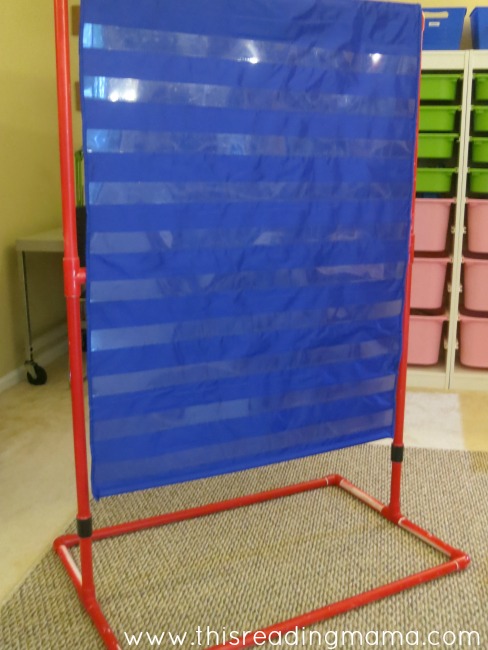
Even your pocket chart can go on a foldable stand {mine is made with PVC piping} that’s pulled out wherever it’s needed. Just be sure your learners know how to manage the materials and space, which comes with lots of modeling.
2. Managing your excitement. You might get over-excited {like I did at first} and want to offer TONS of choices for each center. Don’t. Offering too many choices can present lots of management challenges. Learners begin to get confused as to what you expect and that can create chaos.
Instead, only offer 1-2 choices at first. When learners get the hang of those, add another activity to the mix. Adding and/or changing out the activities a little at a time is also a way of keeping each center fresh.
3. Managing behaviors. MODEL & ROLE PLAY. And when you think you’re modeled and role played out, model and role play more! Just because you’re passionate about something doesn’t mean your learners will magically know what you want them to do.
What do you model/role play? Management of materials, movement around the room, choosing a center, getting help when the teacher is working with a group, using your literacy menu, and anything else that comes up. Modeling can happen any time of the year or any time a problem arises.
Even MORE Management Ideas:
These are a few more management tips I implemented in my year-long centers. Of course, feel free to change them for your purposes.
1. Only 4 learners may be at a center at a time. There’s no magic to this number. Choose what works for you/your classroom.
2. When I called learners’ names to read with me, they were to come right away. Their center folder came with them. If they were in the middle of something, I asked them to tuck it away and they could return to it with the time left or go to it first the next day.
3. Be flexible in center choices. Some weeks, I’d “close” a center. If a center was “closed” for the week, I’d just go ahead and ask learners to mark through it with an “x” on their menu.
4. When learners finished work at a center and had done their best, they were free to choose a center with room for them and move to one of them.
5. Not all learners will do every center. My “lower” group of readers met with me every day for guided reading and/or phonics instruction. They didn’t always get to all the centers…and I had to let that go. Often, I’d write a star on 2-3 of the centers that I definitely wanted them to get to that week. The order they did them in was their choice.
6. With freedom comes responsibility. If I spotted learners who weren’t taking responsibility seriously, I had permission to take away freedom. Usually, this meant requiring them to do their work near my guided reading table or taking away their freedom to choose a center for themselves.
Like I said before, this idea of year-long centers can also be adapted with a rotation schedule, but I honestly loved allowing my learners the responsibility and choice of moving on when they were finished doing their best work.
You Might Like our Printable Visual Literacy Menu OR Google Drive resource that you can completely customize to create your own visual menus.
Enjoy!
~Becky
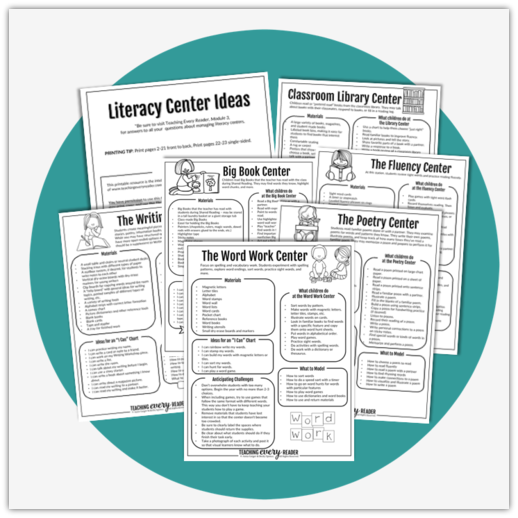
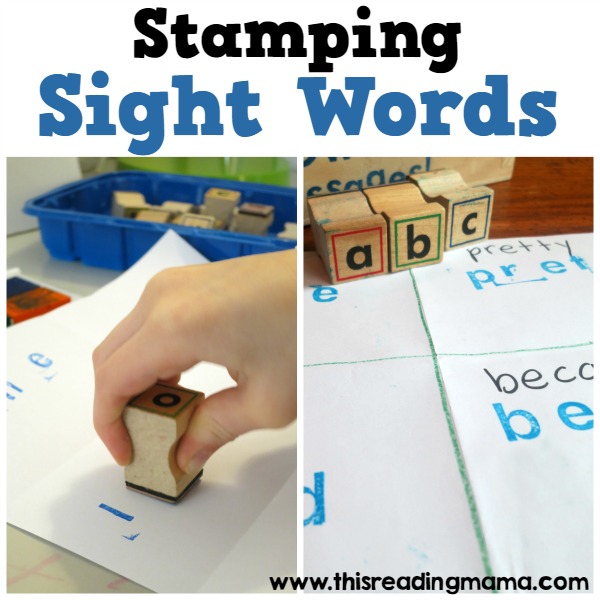
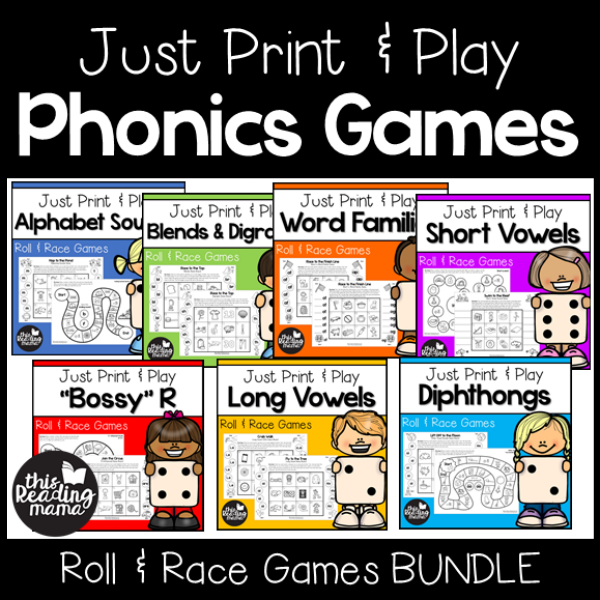
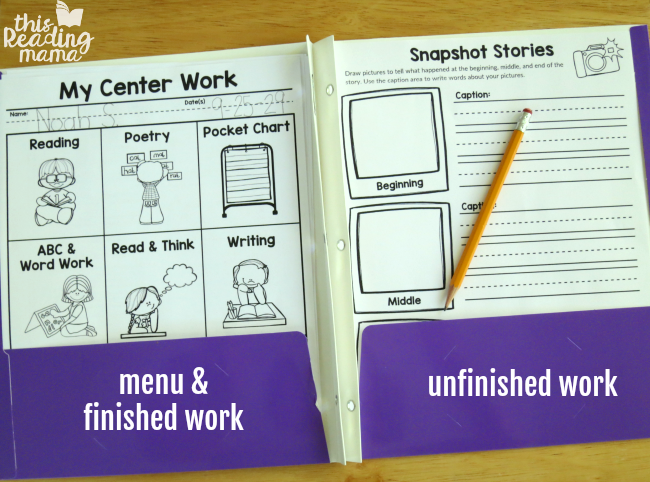
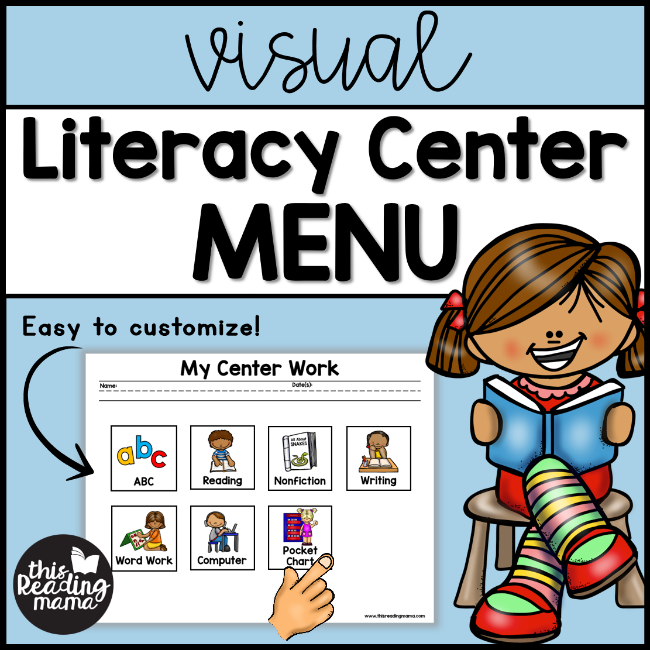

Where can I find the printables from the main picture?
I don’t have those on the blog, yet. 🙂
I am considering allowing choice in my centers for the first time ever! This is due to the fact that with time restraints I can no longer meet with every guided reading group daily so this means at times some students will not come to me and would be stuck at a center for too long unless I allow them to move on to something else. My question is: How do you manage centers like computers or iPads where students would stay the entire time and others wouldn’t get a turn? Is it an issue at all? I thought about sand timers, but it’s hard to find a 15-20 minute timer and each computer would need it’s own as students arrive at different times and get called to reading groups at different times.
Yes, moving to year-long literacy centers was such a game-changer for me and my students. I honestly don’t remember exactly how I handled this problem, but here are a few ideas:
1. Most iPads have a built-in timer, so learners could use those on the individual iPads.
2. You could place one digital clock by your computers (with the big numbers) and teach learners how to look at their start time and write it down on their menu. They would need to calculate 15-20 minutes themselves to know what their stop time will be. They could always ask a classmate to help them with this if they aren’t sure how to add 15-20 minutes to the time.
3. If learners don’t get all the way to 15-20 minutes when you call them to a reading group, you can quickly glance at the page and know how much time they have left based on the start time they wrote.
3. Keeping track of time would need to be modeled and role played so learners know exactly what’s expected of them.
4. This still requires learners to be honest and have integrity with their time on the computer. But freedom and honesty is a big part of the year-long centers. If you discover a child who is consistently dishonest, you could have a little chat with him/her.
5. If you have a few learners who aren’t able to figure out their time, even further into the year, you could have a couple of sand timers or little kitchen timers just for them to use.
Hope that helps!
~Becky